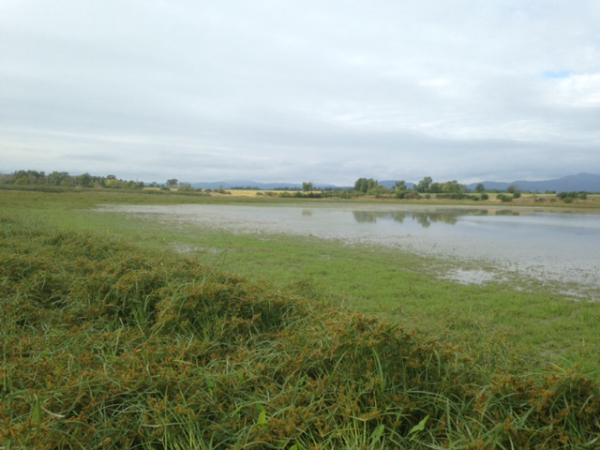
|
MONTPELIER, Vt. – The Vermont Fish and Wildlife Department has developed a new initiative to acquire and restore wetlands in response to funding from the United States Environmental Protection Agency and the Lake Champlain Basin Program.
“As Vermont Fish and Wildlife is the largest owner of wetlands in the state, this is a natural fit to expand and build upon some of our marquis Wildlife Management Areas (WMAs), such as Dead Creek WMA, and it will enable us to strategically enhance other WMAs,” said Fish and Wildlife’s Public Land Section Chief Jane Lazorchak.
The initiative is strategically focused on acquiring marginal agricultural farmland in the Lake Champlain Basin and working both independently and with conservation partners to restore wetlands and floodplains. The goal of the program is to protect and improve water quality while providing habitat for wildlife and public-use value for hunting, fishing and other dispersed wildlife-based recreation for Vermonters. Conservation and restoration projects are essential to Vermont’s on-going efforts to reduce phosphorus pollution in Lake Champlain.
A wetland steering committee with staff from Vermont Fish and Wildlife and the Vermont Department of Environmental Conservation has developed criteria to direct where the funding will be applied. Parcel size, cost and feasibility to restore, and the proximity to wetlands and other protected lands are assessed to prioritize potential projects for phosphorus retention and water quality improvements. Benefits to fish, wildlife, habitat, and natural communities, wildlife crossings, habitat connectivity, and other important ecological attributes will direct prioritization of projects.
“Several strategic wetland acquisitions were completed this year under the new initiative,” said Lazorchak. “With the purchase of five separate parcels, we added 511 acres to four of our largest wetland-based wildlife management areas (WMAs) in the Champlain Valley, including the Rock River, Intervale, Dead Creek and East Creek WMAs. Acquiring these properties for wetland restoration, while adding to our existing WMA system, allows the department to enhance wildlife habitat, protect water quality and improve public access to these sites for Vermonters to engage in hunting, birding, fishing, and other wildlife-dependent activities.”
The Vermont Fish and Wildlife Department has a long, successful history of conserving, managing and restoring wetland habitat in Vermont. When the Sandbar Wildlife Management Area was established as a migratory bird refuge in 1920, Vermont became the first state in the eastern region to protect wildlife and habitat for future generations. Now, 100 years later, Vermont Fish and Wildlife has conserved more than 30,000 acres of important wetland habitat and is now the largest owner of wetlands in the state.
-30-
Media Contacts: Jane Lazorchak, 802-505-0561